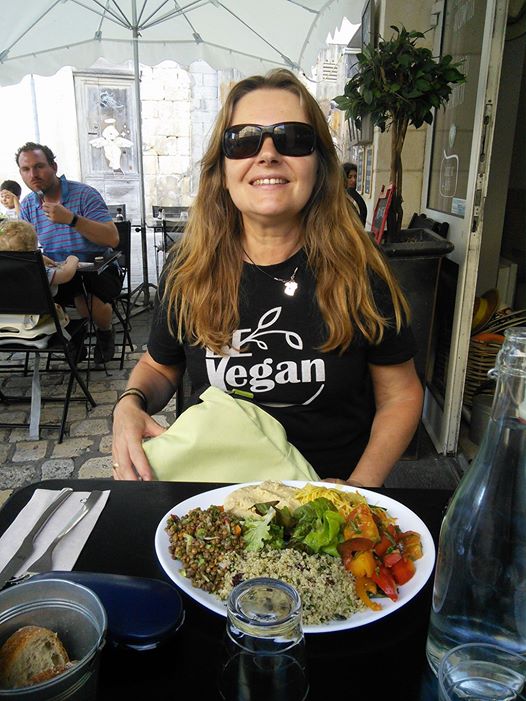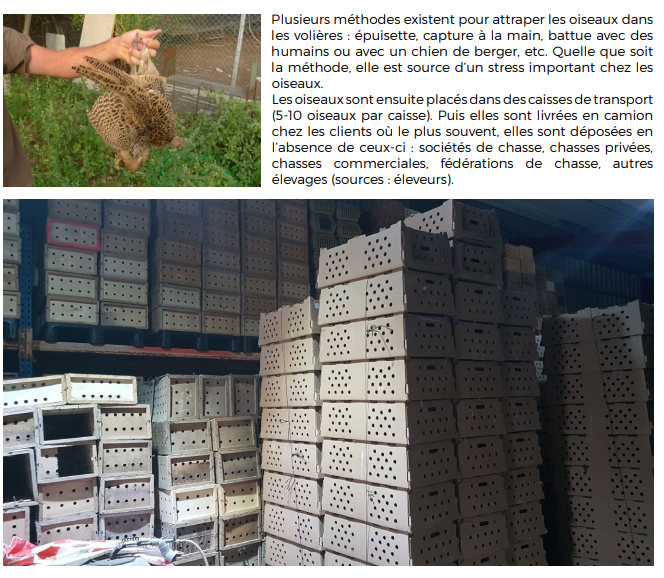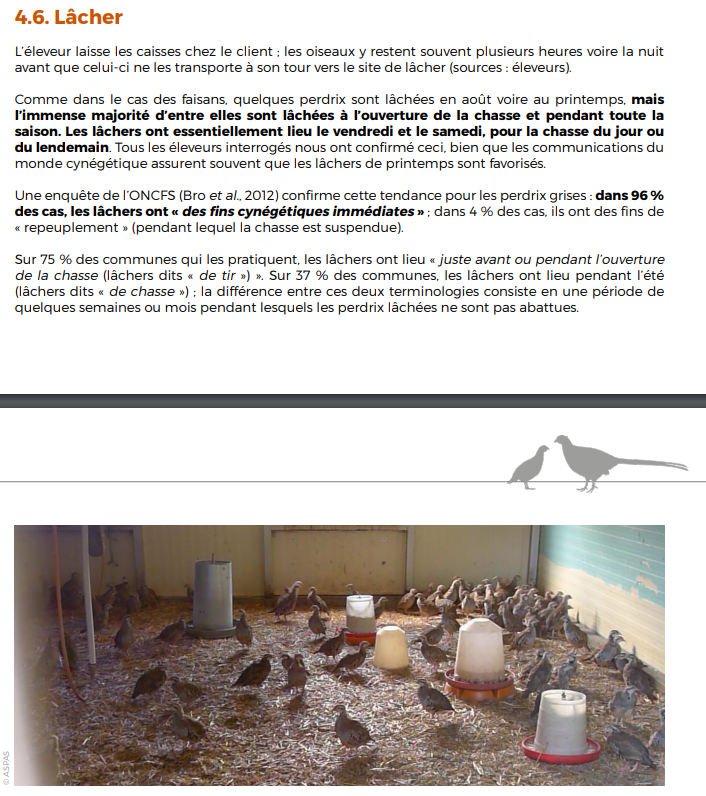
Hunting of small game birds in France
by Marit de Haan, 5 January 2020
In our fields we occasionally spot pheasants, partridges and quails ..... We almost never see them in summer, but mostly in winter when they come to look for food. Most of these animals were raised on farms in the Vendée near to us. There are many: 14 only in the Vendée (imagine how many there are in the whole of France) according to this list. https://www.pecheretchasser.com/chasse/chasser/les-eleveurs-gibiers/gibiers-85-vendee/ This list is not complete however. There are many more. This video shows what they do....
According to the ONCFS's (the French authority for the environment/hunting) documentation on the pheasant more than 3 million individuals are hunted / killed per year across the whole of France. "A significant part of those killed comes from birds that have been released (several MILLIONS a year)." So the pheasants that you see in your garden are very probably not wild. And the breeding conditions are deplorable.... http://www.oncfs.gouv.fr/IMG/pdf/Eclairage-Faisan-Web.pdf
A pheasant breeder for hunting testifies:
"The chicks were born in a farm in the Vendée, overnight just before being delivered by truck to my farm, so they were less than a day old. They were put in buildings with a monitored temperature. Gas-heaters were suspended from the ceiling so that the chicks could gather underneath. They had water in drinkers. Powder with antibiotics was added.
The pheasants were fed with granules supplemented with antibiotics. These foods were supposed to be supplied only by a veterinarian, but the hunters obtained their supplies directly from the manufacturer. It was only while growing that the pheasants also received seeds, always with cures of vitamins and dewormers.
My job was to monitor the temperature in the buildings, add sawdust if necessary. I did not clean the buildings because the hunters did, to my great regret because they entered without health precautions. Despite their mockery, I installed footbaths to disinfect the boots, because there was an enormous mortality with my predecessors, because of the infections which circulate from one building to another.
I had opened a pharmacy to treat injured pheasants because they are very aggressive with each other because of their high concentrations in the buildings. They can at least damage the plumage. But for hunters, the quality of the plumage is not important. "
"10% of the birds died. Before my arrival, it was much worse, it was an eyesore. There was no surveillance. It was because of the mortality rate that the president of the hunting society added a second batch of 1000 additional pheasants to be raised. "
https://blogs.mediapart.fr/pierre-rigaux/blog/061218/entretien-avec-une-ancienne-eleveuse-de-faisans
Association One Voice published a survey this September 2019 on game farms. It highlights the conditions in which pheasants and partridges are kept for hunting in four French farms, including one in Les Herbiers (Vendée).
One Voice considers the "inept and cruel system at all levels", adding: "The logic is industrial: artificial insemination and automated sorting chains for chicks born in incubators, far from their parents. At an early age, the birds will live in the dark for weeks (darkness limits attacks in concentrations of animals growing on the ground, up to 50 per m2). At the juvenile stage, a plastic beak will have to be fitted against physical damage in these highly overcrowded farms. Pain from perforation of the nasal septum, discomfort in swallowing, are sometimes fatal. "
"The human presence is tenuous, the birds are left to themselves in a universe without enrichment, with automated and chemical feeding. The grass has long since disappeared under the incessant back and forth movements of pheasants driven mad by captivity. The earth is bare, surrounded by wire mesh lined with protective nets. Throwing themselves against the wire mesh is useless, but it is their main activity. The worst off are the breeding males, who will not leave their hutch or aviary after two or three years of service, first and last flight… "
"The birds ... will be released after at least 15 weeks of industrial farming, and therefore are unable to survive in the wild! Faced with predators, cars, food difficulties, diseases and of course the rifles which are waiting for them, their life expectancy is very limited. "
According to the ONCFS, survival is 40 to 80% in young birds under 10 weeks, in adults about 50% over a year (obviously because of hunting and trapping among others). A pheasant in captivity can live between 11 and 18 years.
According to different sources, more than 10 million pheasants are released annually. This explains why they are hunted in all departments. This also explains why the cliché "pheasant = shooting game" still has a hard life with hunters, and especially the general public. (ONCFS)
And according to ASPAS 1 in 4 pheasants killed in the hunt comes from a farm:
In this last document of ASPAS you will find even more information on the breeding, the catching, the transportation, the release and hunting of small game like pheasants, partridges, quails etc in France. These two photos below are on the methods of catching and releasing these animals and come from this report.


Let's go back to these poor birds in our back yard. We follow them on camera's, we feed them, we protect them from hunters. Our land is an ASPAS refuge so hunting in or around our property is not allowed (for more information see here: https://www.aspas-nature.org/campagnes/contre-les-derives-de-la-chasse/interdire-la-chasse-chez-soi- refuge/). We advise you to do the same ..... Give them food, water in summer, protect them. If you find any in distress call a good animal rescue association. And together let's stop hunting in France, starting with a ban of hunting on Sunday. So please sign this petition:
Thank you!